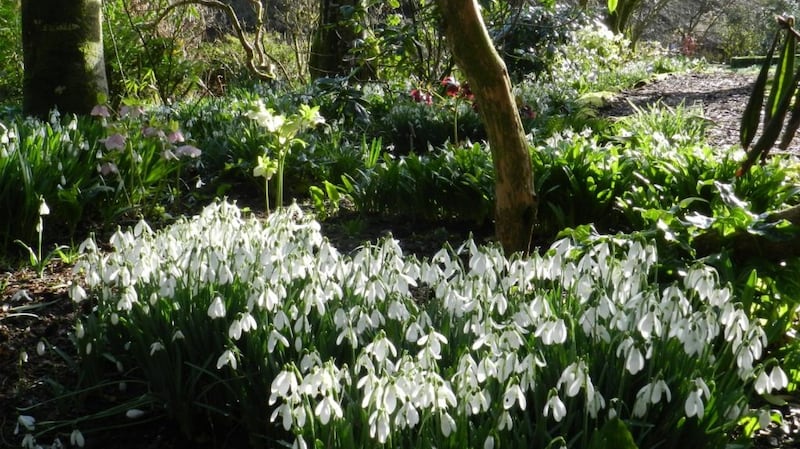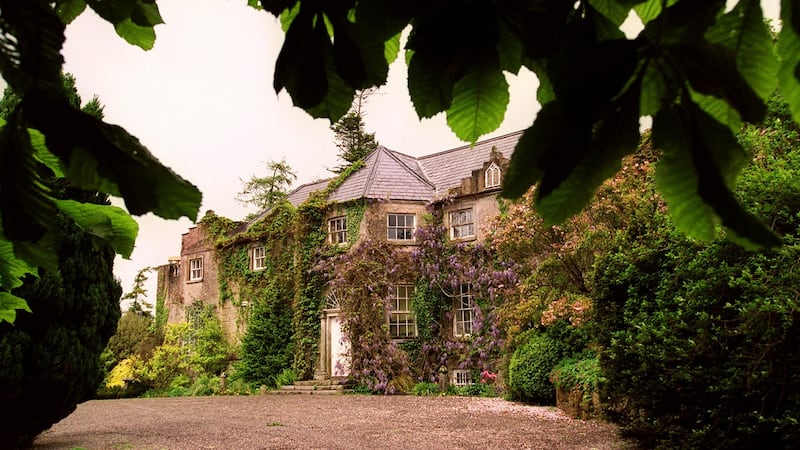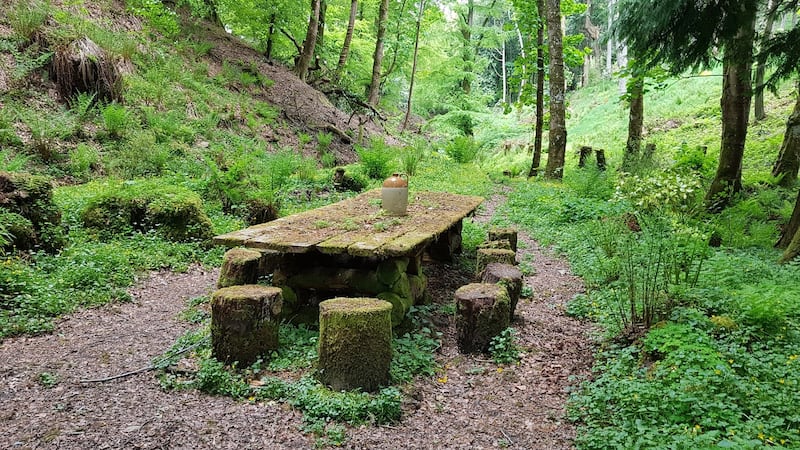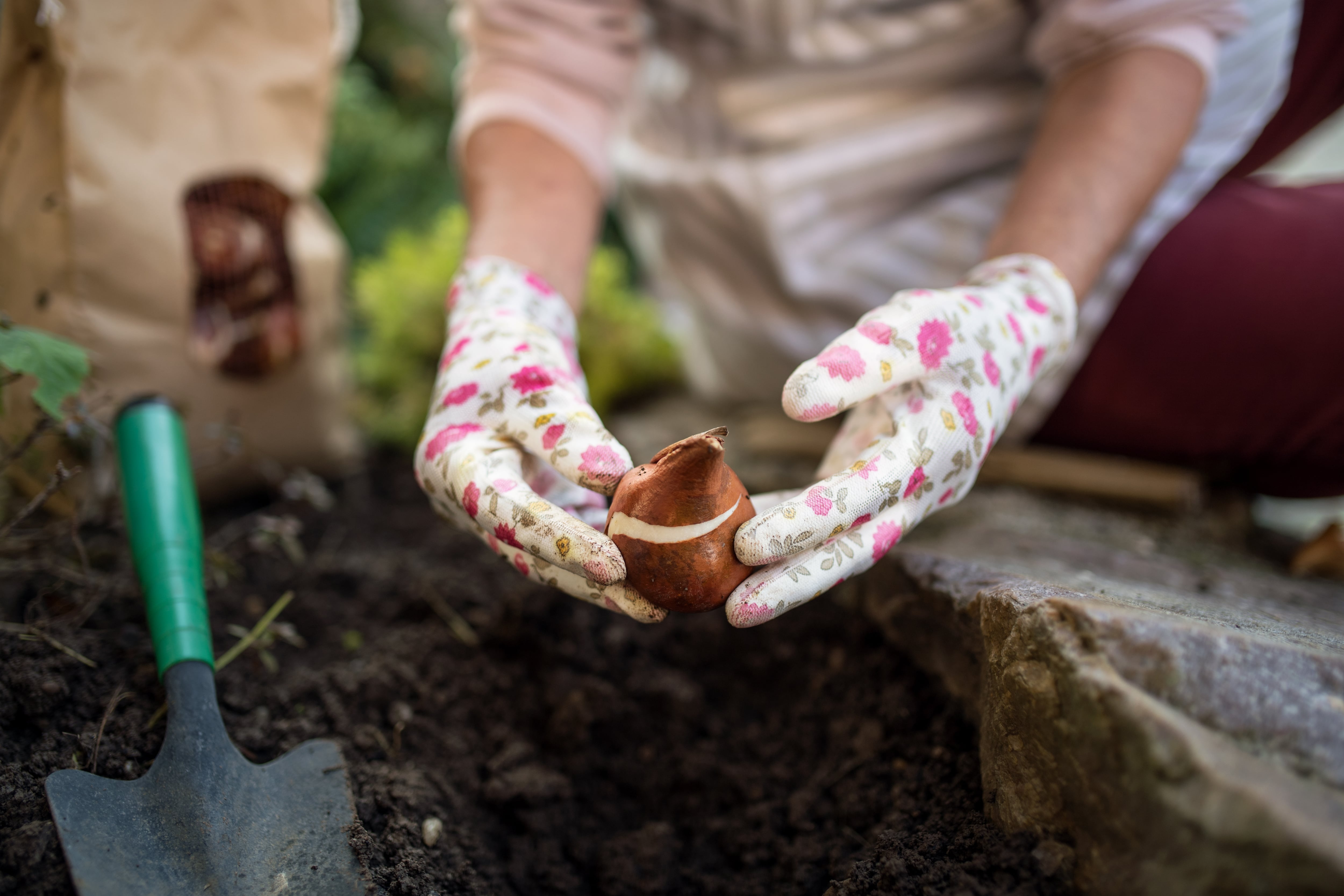I planted the first of the garden’s snowdrops “in the green” last year, tucking each small fleshy bulb into soil-filled nooks in the root-bound ground beneath an ancient beech tree. Last week they started to flower, each tiny white bloom a promise made good. Hunkering down to admire them better, I congratulated them on their beauty, resilience and unfussy ways.
I say unfussy because unlike, for example, dahlias, delphiniums or roses, snowdrops are the cool kids of the garden that never throw a tantrum. Unfazed by fierce cold (the plants produce their own version of antifreeze) and unscathed by the muckiest, wettest dishrag of a late winter’s day, there’s no need to stake, fleece or feed them. There’s no deadheading to worry about, no strange new diseases to be aware of or destructive insect pests to counter. Snowdrops even produce their own natural version of an insecticide, a protein called GNA that acts as a powerful deterrent against sap sucking insects.
What is crucial to successful snowdrop growing, however, is that the plants are given the right growing conditions. Try growing them in soil prone to winter wet and most – bar a few very vigorous varieties – will struggle. Try growing them in poor, dry soil and they will give up the ghost. But give them a humus-rich, damp but always free-draining soil beneath the dappled shade of larger deciduous plants and they will almost certainly flourish. To help them establish extra quickly, try to plant your snowdrops “in the green”, just after they’ve finished flowering but while the plants are still in leaf. Failing that, good quality dormant bulbs planted in autumn are fine.
This brings us to two other crucial points to bear in mind when it comes to successful snowdrop growing, both of which are true of all perennial bulbous plants. The first, is that their foliage must be allowed to die back naturally after flowering, so that the underground bulbs can properly fatten up in preparation for flowering the following year. The second, is to avoid regularly disturbing/digging the soil around established clumps as you’ll almost certainly damage any baby bulblets developing underground.
RM Block
If you’re intent on growing some of the more precious varieties which can sell for eye-watering prices, then plant the bulbs into pond baskets (made from an open mesh plastic, these are designed for water plants) filled with a mix of John Innes compost, leaf mould and plenty of horticultural grit. These can then be plunged into the ground and will help to protect valuable varieties from being accidentally damaged by the sharp edge of a spade. Dedicated galanthophiles also use these pond baskets to keep distinct varieties of snowdrop discreetly separate from each other in the garden.

Clumps of very vigorous varieties also appreciate being divided every three to four years. But other than that, all that these tiny but doughty plants ask for is to be left alone.
This is the reason why centuries-old colonies of snowdrops can be found in historic Irish gardens, parks and ancient graveyards growing in giant, gentle swathes in undisturbed ground. And why naturally occurring new hybrids are found in the sorts of quiet, lightly cultivated, out-of-the-way corners of large gardens where they’ve been able to find a welcome foothold away from the whine of the lawnmower or the overly zealous weeder.
Well-known garden-worthy Irish examples discovered in this way include Galanthus ‘Cicely Hall’, named after the galanthophile and owner of the garden in Lucan, Co Dublin, in which it was first discovered, and Galanthus ‘Brenda Troyle, which was found at Kilmacurragh gardens in Co Wicklow.
Others include Galanthus ‘Kildare’, which was found by the eagle-eyed British snowdrop enthusiasts, the late Ruby and David Baker; Galanthus ‘Hill Poe’ which was first discovered in a Tipperary garden; and Galanthus ‘Castlegar’ which was spotted by the late Irish horticulturist Dr Keith Lamb growing in a Galway garden belonging to the Mahon estate.

Many of these varieties can be admired in flower over the coming weeks as the Irish snowdrop season kicks off in earnest, with different snowdrop celebrations taking place around the country. The biggest and longest established is the annual Snowdrop Gala taking place in Ballykealey House in Co Carlow on Saturday, February 4th. This year’s guest speakers include Troy Scott Smith, head gardener of the UK’s Sissinghurst Castle Garden and Iris Ney, the German author and designer.
Admission (€100) to this year’s daylong event includes a tour of magical Altamont, the garden managed by the Office of Public Works in Ballon, Co Carlow whose own outstanding collection of snowdrops was started by its owner the late Corona North, with the tradition then carried on by successive head gardeners after her death. Nurseryman Robert Miller, one of the organisers of the gala (the other is the Cork-based nurserywoman and galanthophile Hester Forde of Coosheen Gardens in Cork), also continue the tradition in Altamont’s walled garden nursery. Several specialist Irish nurseries will be selling snowdrops and other spring-flowering plants at this year’s gala including Coosheen Plants, Gortkelly Nursery, Fields of Bloom, Assumpta Broomfield and Esker Farm as well as Avon Bulbs via Altamont Plants Sales.
Elsewhere around the country, the late Angela Jupe’s garden Bellefield in Co Offaly which the landscape architect and plantswoman so generously left to the Royal Horticultural Society of Ireland (RHSI) after her death in 2021 will be reopening to the public under the care of the gardener and author Paul Smyth. A devout galanthophile who built up a marvellous collection of snowdrops over the course of her life and was working on a book about the Galanthus genus before her death, Jupe passed on her love of snowdrops to Smyth when he first came to Bellefield as a young gardener on work placement. With Smyth now entrusted with the care of Bellefield’s gardens by the RHSI, that shared love of all things snowdrops has come full circle.

Other Irish gardens known for their collection of snowdrops that will be opening to the public in some form during February include Blarney Castle in Co Cork; Ballyrobert in Co Antrim; Hunting Brook in Co Wicklow; Kilmacurragh in Co Wicklow; and Primrose Hill in Lucan, Co Dublin. See below for details and make sure to check with individual gardens for admission charges.
Annual Snowdrop Gala & Other Treasures, Ballykealey House, Ballon, Co Carlow
Saturday, February 4th; payment for tickets by PayPal via sales@altamontplants.com, or by credit card; contact Robert Miller on 087 9822135
Snowdrop Weekend, RHSI Bellefield, Shinrone, Co Offaly
From Friday, February 24th, until Sunday, February 26th; 11am-4pm; rhsi.ie
Ballyrobert Gardens, 154 Ballyrobert Road, Ballyclare Co Antrim
Snowdrop Open Days run from Saturday, February 11th, until Saturday, February 18th; 2pm-3.30pm; pre-booking by email; ballyrobertgardens.com
Hunting Brook, Lamb Hill, Tinode, Blessington, Co Wicklow
Guided tours of its snowdrop collection by owner, gardener and author Jimi Blake. Wednesday, February 15th, Friday, February 17th, Saturday, February 18th and Sunday, February 19th; 11am and 2pm; huntingbrookgardens.com
Blarney Castle, Blarney, Co Cork
Open daily. See blarneycastle.ie
Kilmacurragh Gardens, Kilmacurragh, Co Wicklow
Open daily. See botanicgardens.ie
Snowdrop Month at Altamont Gardens, Ballon, Co Carlow
Daily guided tours of the garden’s snowdrop collection; Monday to Friday throughout February; 2pm; prebooking required; carlowtourism.com
Primrose Hill, Lucan, Co Dublin
Home to an outstanding snowdrop collection created over 50 years by the Hall family; open 2pm-5pm throughout February
This week in the garden
January is a busy time for pruning many kinds of shrubs, trees, roses and fruit bushes. For best results, arm yourself with a good secateurs, loppers and/or pruning saw (these should be clean and sharp) and a pair of strong protective gloves. For gardeners tackling extensive pruning work, consider investing in a miniature battery-powered pruning-chainsaw to speed up the job and make it easier on your hands. Spread a tarpaulin on the ground to more easily collect pruned material.
[ Sow and grow in January: 10 jobs for the kitchen gardenerOpens in new window ]
If you’ve recently sowed sweet pea seeds, then avoid keeping young seedlings in a warm room, as too much heat/too little light will make them weak and leggy. Instead, once they’ve germinated and developed their first true set of leaves, place them in a cool glasshouse/polytunnel or in a sheltered spot on a table outdoors and take precautions against rodents which like to eat the seed. Young sweet pea plants can tolerate temperatures down to -5 degrees but seedlings need some frost protection. Nip out the growing tips of young sweet pea plants once they’ve produced three to four sets of leaves to encourage strong, bushy plants.
Dates for your Diary
Thursday, January 26th; 8pm; Garryduff Sports Center, Rochestown, Co Cork, T12ER22; Designing for Atmosphere in the Garden, a talk by Conall Ó Caoimh of Ardan Garden, Howth, Dublin, on behalf of the Cork Alpine Hardy Plant Society.



















